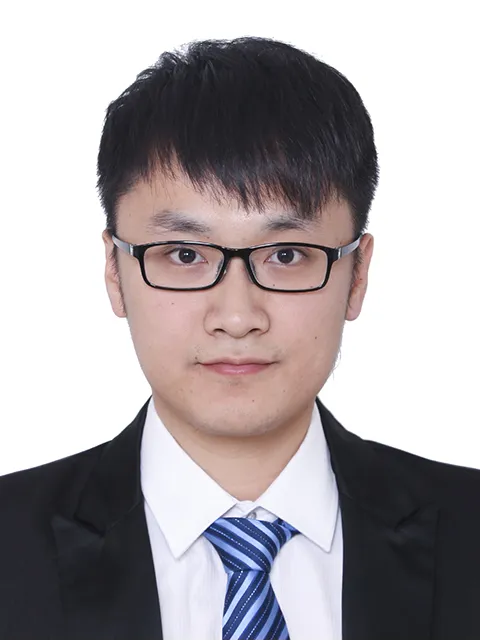
Meeting time
July 18, 2025 10:00-12:00
Meeting location
Conference Room 502, 5th Floor, Building 5, Jinfeng Laboratory
Lecture Topic 1: High sensitivity detection and real-time monitoring of low-abundance polypeptide proteins in vitro
Introduction to the speaker

Zhang Pu, a distinguished professor and doctoral supervisor at Chongqing Medical University, is currently the deputy director of the Drug Engineering Research Center of Chongqing University. He was selected as the top provincial and ministerial talent in the Chongqing Talent Program. He was nominated for the 13th Chongqing Youth Science and Technology Innovation Mayor Award (Professional Youth Group), a pioneer figure in Chongqing Youth Science and Technology Innovation in 2022, etc. The research direction is high-sensitivity analysis inside and outside the body and diagnosis and treatment of drug-resistant pathogens. He presided over 10 scientific research projects including the National Natural Surface and Qingji. He published SCI in Nano Lett. 40 articles, with a total of more than 270 IFs, 8 IFs > 10 points, 3 authorized patents, and 7 publications. They serve as a member of the Drug Analysis Technology Branch of the China Pharmaceutical Biotechnology Association, a young director of the Chinese Optometry Society, a member of the 6th Education and Culture Committee of the Jiusan Society, and a young editorial board of the academic journals Journal of Pharmaceutical Analysis (JPA) and Journal of Analysis and Testing (JAT). Teaching and research are in harmony. He has won the second prize of the National Excellent Textbook Award (national level, ranking 4th), and has participated in the compilation of the textbook "Basic Drug Analysis" of the Science Press. He has continuously guided undergraduates to win the second and third prizes of the National Innovation Achievements of the National College Students' Pharmaceutical Garden Forum.
Lecture introduction
Biopharmaceuticals are in the core social demand stage, and the accurate amount of low-abundance peptides/proteins (such as most biopharmaceuticals and biomarkers, ng or pg levels) is very important for drug quality control and disease diagnosis and treatment, but their structural speciality makes it difficult to accurately monitor in vitro and in vivo. Zhang Pu focused on this problem and constructed a series of new methods of in vitro sensitive detection and in vivo real-time monitoring, which solved the sensitivity and anti-interference problems in in vitro complex sample detection, and accurately quantitated the quantity in clinical blood samples, laying a solid theoretical and practical foundation. In addition, in vivo real-time bioimaging monitoring of heart failure disease markers was innovatively performed in fluorescence/photothermal colocalization to spatially analyze low-abundance peptide protein distribution in live animals.
Lecture topic 2: Design and regulation of near-infrared light-responsive nanoenzymes and antibacterial applications
Introduction to the speaker

Wang Yi, Ph.D., Dean/Professor of the School of Chemistry, Chongqing Normal University, Doctoral Supervisor, Academic and Technical Leader of Chongqing City, Leading Expert of Chongqing Youth Expert Studio, Executive Deputy Director of Chongqing Key Laboratory of Green Catalytic Materials and Technology, Head of Innovation Research Group of Chongqing University in Precision Nanosynthesis and Catalytic Application, Vice Chairman of Chongqing Society of Chemistry and Chemical Engineering, and Executive Director of Chongqing Society of Biomedical Engineering. He is mainly engaged in the application research on the precise regulation of nanostructures and its biosensing, antibacterials, etc. He has presided over 10 projects including the National Natural Science Foundation and provincial and ministerial key projects. He has published more than 90 academic papers in journals such as J. Am. Chem. Soc., ACS Nano, Nano Lett., Anal. Chem., etc., with more than 6,000 citations, and has personal H-index 37. He has published 1 academic monograph, 4 patents authorized, and won the National Outstanding Science Popularization Works Award, the Third Prize of Chongqing Natural Science, and the Chongqing Innovation Prize Award.
Lecture introduction
With the rapid development of nanotechnology, the field of biomedical science is increasingly concerned about how to use nanomaterials and nanotechnology to solve the problems in clinical diagnosis and treatment. Nanozymes are a type of simulated enzyme with nanomaterial characteristics and catalytic functions. They have the characteristics of high catalytic efficiency, stable, economical and large-scale preparation. They have shown application potential in biomedical, food, environment and other fields and have been selected as one of the top ten emerging technologies in the chemistry field in 2022. Based on the research progress of the research team in recent years, this report will systematically introduce the design, synthesis and performance regulation of near-infrared light-responsive nanoenzymes, especially the research on the enhancement effect and mechanism of near-infrared plasmon characteristics on its nanoenzyme activities, as well as its application in the treatment of drug-resistant bacterial infection.
Lecture topic 3: Research and development of anti-tumor nanodrugs under the guidance of pathology
Introduction to the speaker

Zhang Xiao, Ph.D., researcher in the Department of Pathology at the First Affiliated Hospital of the Army Military Medical University (Southwest Hospital), Youth PI, and a young scholar in Bayu, Chongqing. He has been engaged in research on anti-tumor nanodrugs for a long time, presided over 5 national and provincial and ministerial projects, published 17 SCI papers as the first author or corresponding author, with a total of more than 7,000 citations, H factor 41, and 2 authorized patents.
Lecture introduction
Currently, tumor treatment still faces challenges such as great toxic side effects, limited efficacy and lack of accuracy. Nanopharmaceuticals provide new ideas for tumor treatment due to their good targeting and pharmacokinetic properties. However, traditional nanomedicines mostly adopt "standardized design", which is difficult to adapt to the high heterogeneity of tumors, resulting in limited therapeutic effects. Tumor pathological characteristics, such as metabolic abnormalities, microenvironment changes, signaling pathway activation, etc., profoundly affect the effect of drugs and are an important basis for precise treatment. Introducing pathological research results into nanodrug design can achieve the precise adaptation of individualized targeting, responsive release and combined treatment strategies, improve treatment effects and promote clinical transformation. Based on the research progress of the research team in recent years, this report is based on the exploration and analysis of tumor pathological characteristics, and introduces the design ideas and efficacy verification results of a variety of new anti-tumor nano drugs, providing a more targeted and effective new solutions for clinical treatment.
Everyone is welcome to actively participate